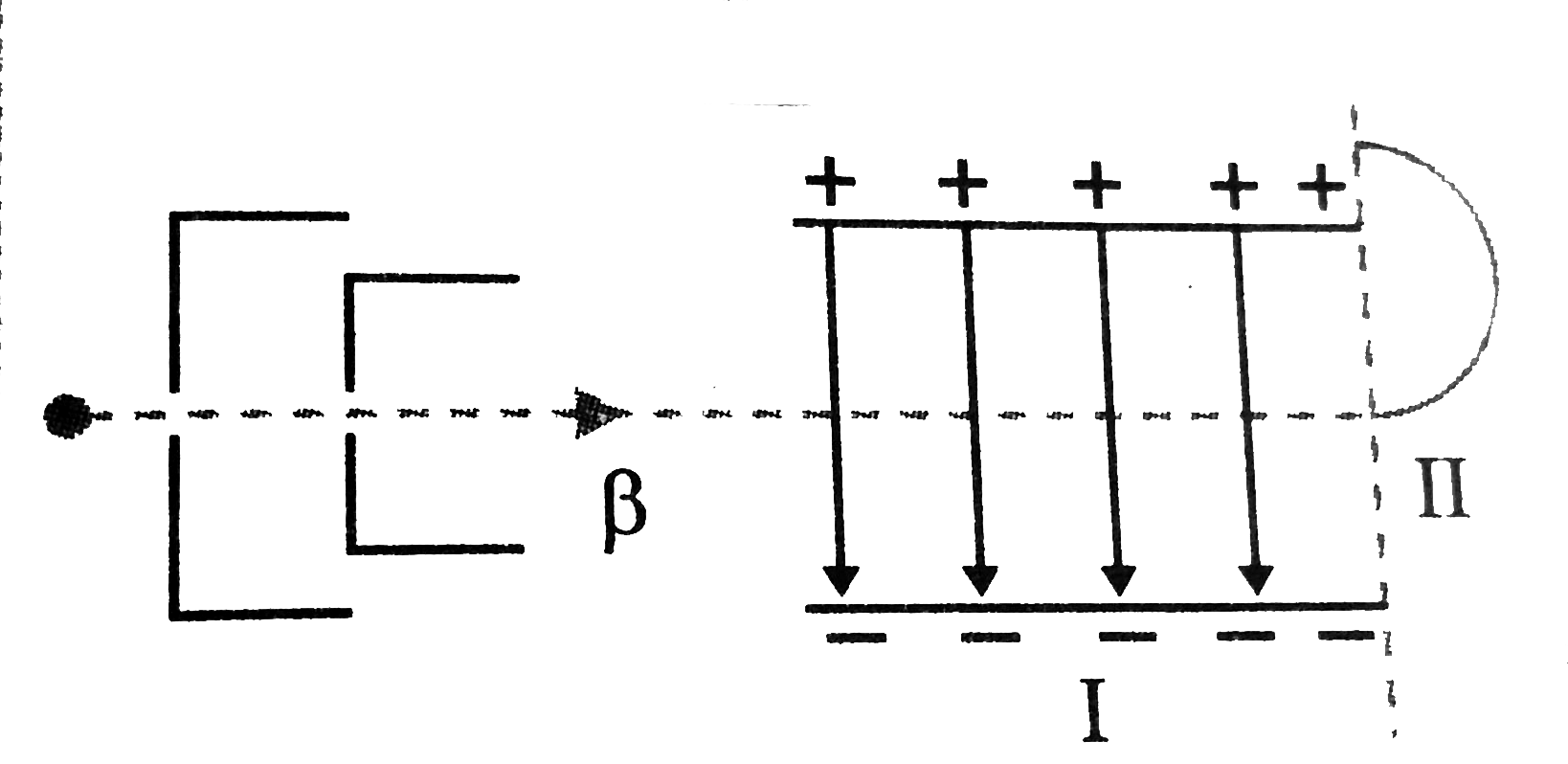A fine pencil of β-particles, moving with a speed v, enters a region (region I), where a uniform electric field and a uniform magnetic field are both present. These β-particles then move into region II where only the magnetic field, (out of the two fields present in region I) exists. The path of the β-particles, in the two regions is as shown in the figure.

(i) state the direction of magnetic field.
(ii) state the relation between E and B in region I.
(iii) Drive the expression for the radius of the circular path of the β-particle in region II.
(iv) If the magnitude of magnetic field, in region II is changed to n times its earlier value, (without changing the magnetic field in region I) find the factor by which the radius of this circular path would change.
Video Solution
Text Solution
(i) As the β-particle goes undeviated while passing through the electric and magnetic fields, so the force on moving β-particle due to electric field (−e→E) must be equal and opposite to the force due to magnetic field [−e(→v×→B)]. Due to it, the direction of →B must be perpendicular to plane of paper downwards.
(ii) In region I as β-particle goes undeviated
−e→E=−e(→v×→B) or eE=evB or v=E/B
(iii) If r is the radius of circular path of the β-particle in region II, then
evB=mv2/r or r=mveB
(iv) If B′=nB, then r′=mveB′=mvneB
∴r′r=1n or r′=rn
|
Topper's Solved these Questions
- MAGNETIC EFFECT OF CURRENT AND MAGNETISMBook:PRADEEPChapter:MAGNETIC EFFECT OF CURRENT AND MAGNETISMExercise:Conceptual Problems (d)
Explore 2 Videos
- MAGNETIC EFFECT OF CURRENT AND MAGNETISMBook:PRADEEPChapter:MAGNETIC EFFECT OF CURRENT AND MAGNETISMExercise:Very Short Answer Questions (a)
Explore 2 Videos
- ELECTROSTATICSBook:PRADEEPChapter:ELECTROSTATICSExercise:ASSERTION-REASON TYPE QUESTIONS
Explore 2 Videos
- OPTICSBook:PRADEEPChapter:OPTICSExercise:Multiple choice questions
Explore 1 Video
Similar Questions
Knowledge Check
In a region where both non-zero uniform electric field and magnetic field coexist, the path of a charged particle
Acan not be a circleBmay be a circleCmay be a straight lineDmay be a helixA charge particle travels along a straight line with a speed v in region where both electric field E and magnetic field b are present.It follows that
A|E|=|B| and the two field are perpendicularB|E|=v|B| and the two field are perpendicularC|B|=v|E| and the two field are parallelD|B|=v|E| and the two fields are perpendicularA charged particle is released from rest in a region of steady uniform electric and magnetic field which are parallel to each other. The particle will move in a
Astraight lineBcircleChelixDcycloid
A particle of mass m and charge q is thrown in a region where uniform gravitational field and electric field are present. The path of particle:
View SolutionA particel of mass m and charfe q is throun in a region wihere unirfrom gravittional field and electric field are present . The path of particle -
View SolutionForce acting on a moving charged particle in a region of electric and magnetic fields is called
View SolutionA uniform electric field and a uniform magnetic field exist in a region in the same direction. An electron is projected with a velocity pointed I the same direction. Then the electron will:
View SolutionA β-particle enters a magnetic field making an angle of 45∘ with the field lines. The path of the particle is
View Solution

